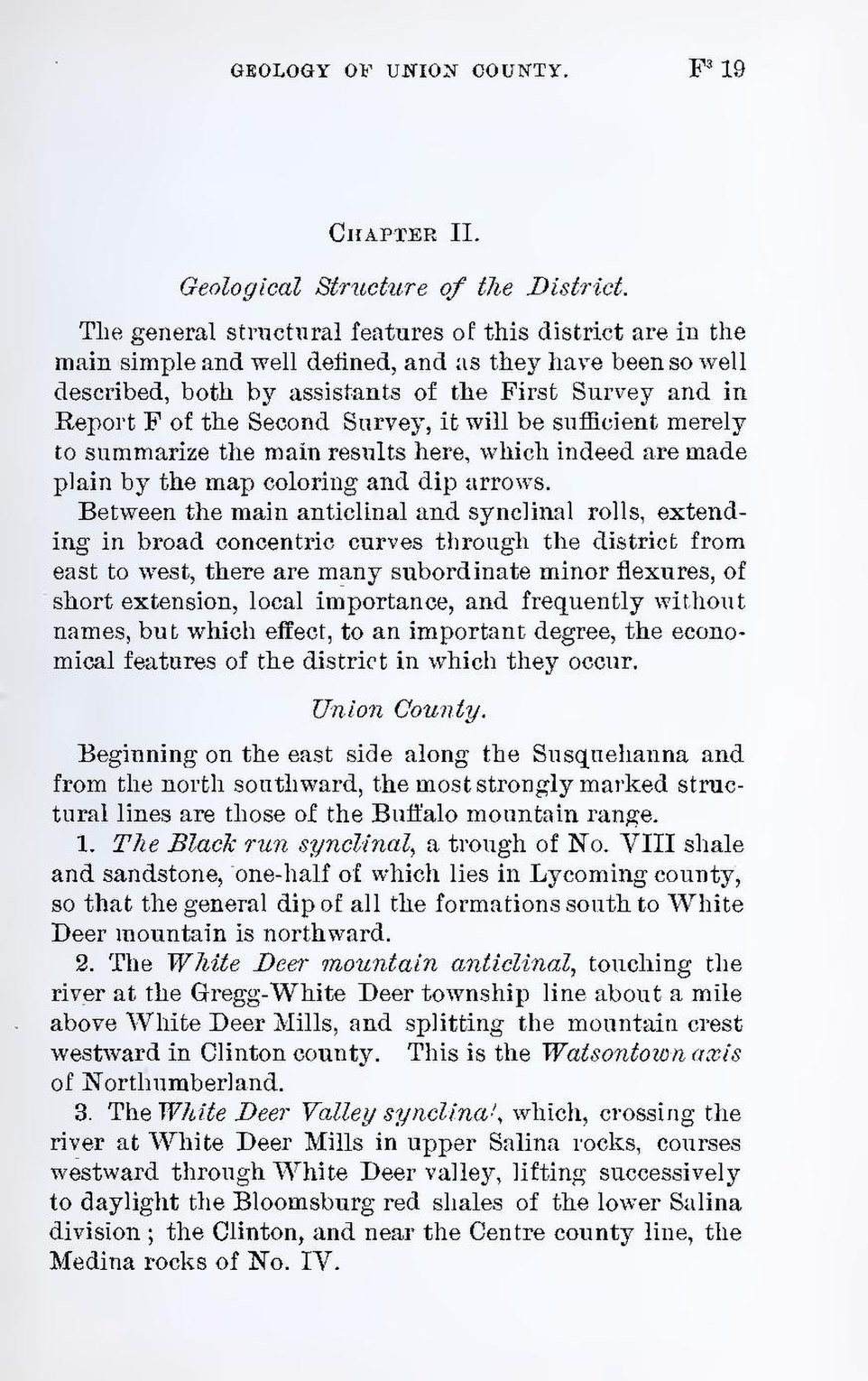Chapter II.
Geological Structure of the District.
The general structural features of this district are in the main simple and well defined, and as they have been so well described, both by assistants of the First Survey and in Report F of the Second Survey, it will be sufficient merely to summarize the main results here, which indeed are made plain by the map coloring and dip arrows.
Between the main anticlinal and synclinal rolls, extending in broad concentric curves through the district from east to west, there are many subordinate minor flexures, of short extension, local importance, and frequently without names, but which effect, to an important degree, the economical features of the district in which they occur.
Union County.
Beginning on the east side along the Susquehanna and from the north southward, the most strongly marked structural lines are those of the Buffalo mountain range.
1. The Black run synclinal, a trough of No. VIII shale and sandstone, one-half of which lies in Lycoming county, so that the general dip of all the formations south to White Deer mountain is northward.
2. The White Deer mountain anticlinal, touching the river at the Gregg-White Deer township line about a mile above White Deer Mills, and splitting the mountain crest westward in Clinton county. This is the Watsontown axis of Northumberland.
3. The White Deer Valley synclinal, which, crossing the river at White Deer Mills in upper Salina rocks, courses westward through White Deer valley, lifting successively to daylight the Bloomsburg red shales of the lower Salina division; the Clinton, and near the Centre county line, the Medina rocks of No. IV.
